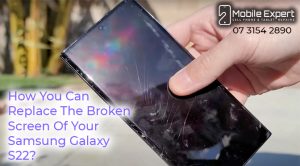Apple iPhone 15 Introduces Type-C Port and Chip Verification: Implications for Third-Party Repair Shops


Introduction
The technology world is no stranger to Apple’s innovative strides, with each new iPhone model pushing the boundaries of what’s possible in terms of design and functionality. The release of the Apple iPhone 15 has not only continued this trend but has also brought forth significant changes that impact both users and third-party repair shops. One of the notable changes is the introduction of a Type-C port and a chip verification system that aims to deter the use of non-genuine parts. While these developments may enhance security and performance for users, they also pose challenges for the thriving ecosystem of third-party repair shops.
The Transition to Type-C Port
The adoption of the Type-C port in the iPhone 15 marks a departure from Apple’s longstanding use of the Lightning port. The Type-C port offers faster data transfer speeds and improved charging capabilities, aligning with the industry’s shift towards this versatile standard. This change benefits users by providing a more efficient and standardized connection option. However, it poses a significant challenge for third-party repair shops that have traditionally relied on Lightning port components and tools. Repair shops must now invest in new equipment and retrain their technicians to work with the updated technology.
Chip Verification and Non-Genuine Part Error
Apple’s introduction of a chip verification system in the iPhone 15 is intended to safeguard user experience by preventing the use of non-genuine parts. This system is designed to detect unauthorized hardware modifications and displays an error message if a non-Apple component is detected during the repair process. While this measure strengthens the security and reliability of iPhones, it has sparked controversy within the third-party repair community.
The Challenge: Non-Genuine Part Usage
While third-party repair shops have long been a cost-effective alternative for users seeking device fixes, Apple has raised concerns about the quality and authenticity of the replacement parts used. Non-genuine components can potentially compromise device performance, security, and longevity, leading to a subpar user experience. Recognizing this issue, Apple has taken a proactive stance to address the challenge of non-genuine part usage.
Challenges for Third-Party Repair Shops
- Access to Genuine Parts: With the chip verification system in place, third-party repair shops face greater difficulty in sourcing genuine Apple parts. This can lead to a reduction in the quality of repairs and potentially compromise device performance.
- Increased Costs: The need for authentic components and specialized tools to perform repairs on the iPhone 15 can significantly increase the operating costs for third-party repair businesses. These costs may ultimately be transferred to the end consumers, making third-party repairs less cost-effective.
- Technical Expertise: The chip verification system necessitates a higher level of technical expertise to bypass or work around. Repair shops now need to invest in training their technicians to address these challenges, further straining their resources.
- Market Exclusivity: The chip verification system can potentially give Apple an edge in the repair market, as only authorized service providers may have access to the necessary tools and software to conduct seamless repairs. This exclusivity could limit options for consumers seeking more affordable and accessible repair services.
- Legal Implications: The introduction of a chip verification system could potentially raise legal questions about the right to repair. Third-party repair shops may face legal challenges or restrictions as they attempt to navigate around this new technological barrier.
Conclusion
Apple’s iPhone 15 brings several advancements that undoubtedly enhance user experience, from the adoption of the Type-C port to the implementation of a chip verification system. While these changes offer heightened security and improved performance, they simultaneously present significant challenges for third-party repair shops. As the debate around the right to repair intensifies, it remains to be seen how Apple’s latest innovations will shape the future of smartphone repairs and the broader technology repair ecosystem.




Leave a Reply